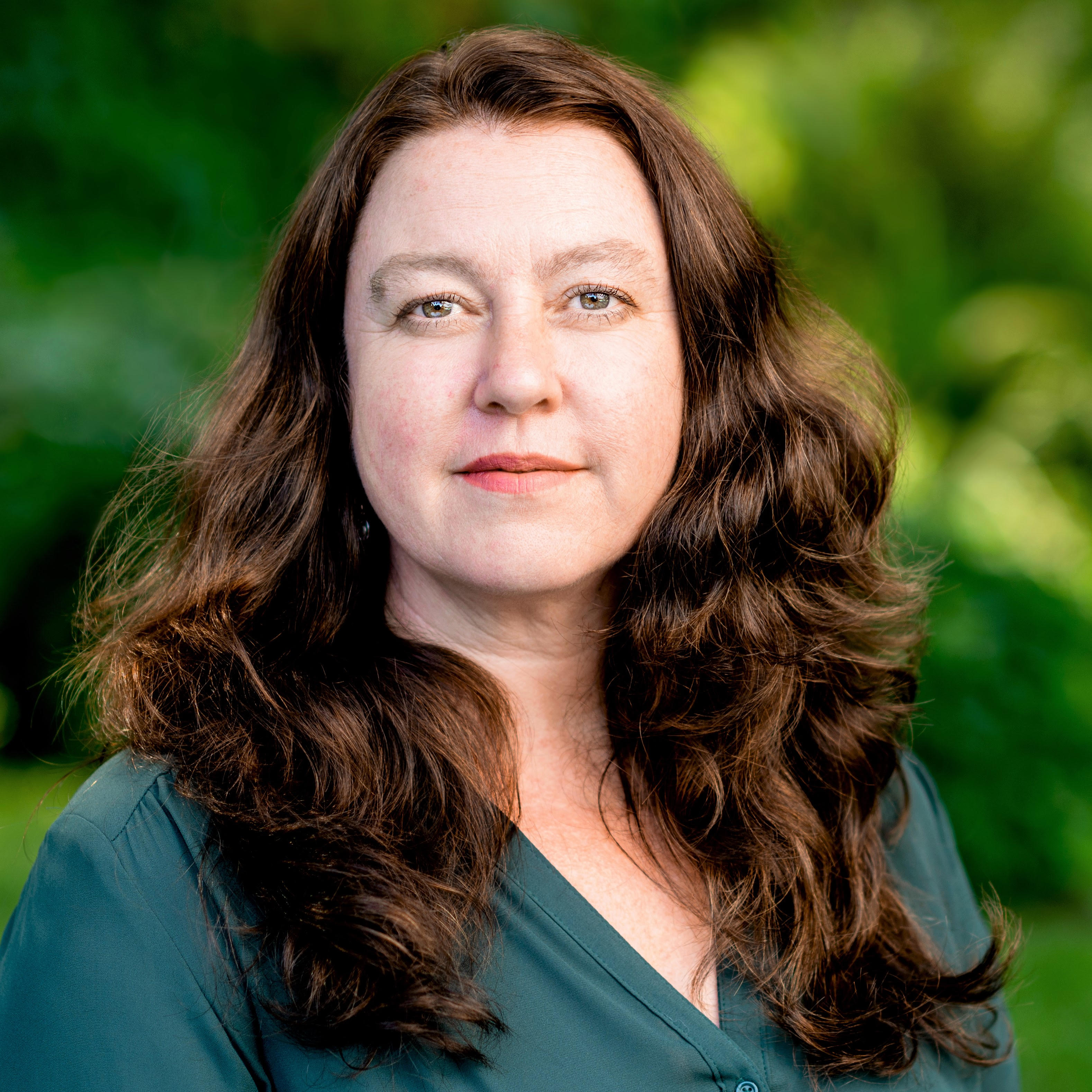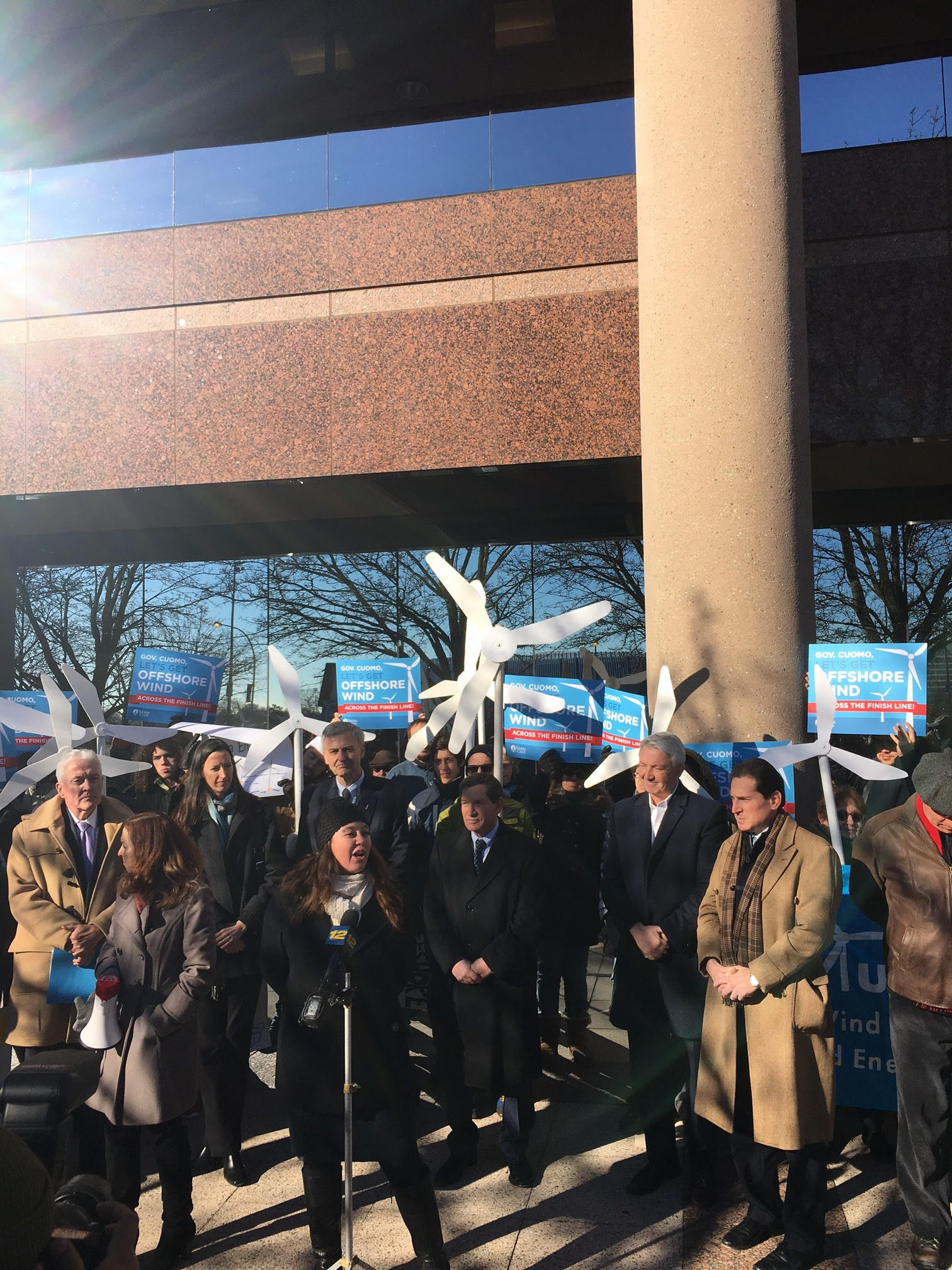by Ellen Cardone Banks
New York’s first offshore wind farm, the South Fork Wind Farm, is scheduled to begin construction in January 2022, quickly followed by Sunrise Wind and Empire Wind, and will start generating electricity for over a million homes by 2024 (1), supporting our state’s climate goals by replacing energy from dirty fossil fuel plants. As with all climate victories, this didn’t happen by itself; years of organizing and coalition-building made it happen, and one of the many who led that process was Lisa Dix, during her 9 years with the Sierra Club as Senior Campaign Manager for the Beyond Coal Campaign. Lisa grew up in Utah, acquiring an early love of the outdoors in a family of campers and fishers. After college she lived and worked in Alaska and then traveled and lived in several Asian countries. Her early activism was with organizations opposing open air nuclear testing and promoting nuclear disarmament, motivated in part because her home region of Utah had been harmed by pollution from the nuclear industry.
Lisa grew up in Utah, acquiring an early love of the outdoors in a family of campers and fishers. After college she lived and worked in Alaska and then traveled and lived in several Asian countries. Her early activism was with organizations opposing open air nuclear testing and promoting nuclear disarmament, motivated in part because her home region of Utah had been harmed by pollution from the nuclear industry.
After completing a graduate program in Montana, Lisa’s next project was wildlands protection. She worked with nonprofits dedicated to preserving national forests, including fire management and forest restoration, and was a leader in the Roadless Campaign that protected 60,000,000 acres of forests across the US from road construction, logging, mining and grazing.
The accelerating urgency of the climate crisis inspired Lisa’s next professional endeavor in 2012, when she was tapped to lead the Beyond Coal Campaign in New York, the center of Sierra Club’s efforts in the electric sector. When Lisa started this role, coal in the electric sector was the largest contributor to carbon emissions nation-wide, so eliminating coal fired power plants, stopping coal plants from converting to fracked gas, massively scaling clean, homegrown renewable energy to replace New York’s coal and gas plants and ensuring a just an equitable transition for workers and communities was the mission. Meanwhile, the harms of hydrofracking were just beginning to be understood. At that time, she said, Governor Cuomo was pro-coal, pro-fracking and uninterested in renewable energy at scale. With allied organizations the Beyond Coal team in New York focused on the goals of scaling renewables as quickly as possible while phasing out coal and stopping fracked gas plants in the electric sector and preventing fracking in New York. To achieve these goals, the Beyond Coal Campaign concentrated on “moving the Governor” and influencing the State Legislature. There were five coal-fired power plants in New York at that time. Even after three were successfully retired, the remaining two, Somerset and Cayuga, were responsible for over 20% of the state’s electric sector emissions. “The strategy was always that when we were phasing out coal, we would stop all efforts to replace coal with fracked gas and scale renewable energy and…we believed in making sure that we were working toward a just and equitable transition to a clean energy economy that would provide a glide-path and uplift workers and communities in New York,” Lisa said in a recent interview. Most public and Sierra Club discussion on renewable energy was about distributed solar at that time, and many environmentally-inclined people were still wary of large-scale renewable energy, believing that energy efficiency and roof-top solar would solve the climate crisis.
The Jacobson report (2) on how the world’s energy needs could be met with large-scale renewables was one influence on changing public awareness of the magnitude of fossil fuel replacement that would be required to hold off the worst effects of climate change and the calculations showing that a 100 percent renewable electric sector was achievable. Gradually, with help and support from many Sierra Club allies, partners and a powerful and effective renewable energy movement, New York State finally committed to sourcing 50%, and a few years after 70 percent of electricity from renewable energy by 2030.(Since then, the Climate Leadership and Community Protection Act of 2019 has mandated New York achieve a 100% decarbonized grid by 2040.)  Mobilizing Sierra Club’s people power and building a climate movement to push New York decision makers to make climate change a priority were parallel goals of BCC, especially on Long Island, adjacent to the continental shelf where offshore wind (OSW) will be sited. The Sierra Club’s OSW campaign was launched in 2013. The Long Island Power Authority (LIPA) was facing a decision—either build a massive new gas plant and refire several existing oil and gas plants at a cost of $6 billion, or to embrace OSW, roof-top and large-scale solar efficiency. With Sierra Club in the lead, New York Wind was launched, a multi-organizational coalition that eventually grew to about 60 organizations. While focused on OSW, scaling upstate land-based wind, utility-scale solar advocacy, distributed renewable energy, storage, energy efficiency and anti-fracking were BCC’s campaign priorities. Mobilizing Sierra Club’s base and building a state-wide climate movement to create the political and public support to get the dirty energy out, lock in a state renewable energy policy framework and compel our decision leaders to take the political action necessary to decarbonize New York’s electric grid was the goal.
Mobilizing Sierra Club’s people power and building a climate movement to push New York decision makers to make climate change a priority were parallel goals of BCC, especially on Long Island, adjacent to the continental shelf where offshore wind (OSW) will be sited. The Sierra Club’s OSW campaign was launched in 2013. The Long Island Power Authority (LIPA) was facing a decision—either build a massive new gas plant and refire several existing oil and gas plants at a cost of $6 billion, or to embrace OSW, roof-top and large-scale solar efficiency. With Sierra Club in the lead, New York Wind was launched, a multi-organizational coalition that eventually grew to about 60 organizations. While focused on OSW, scaling upstate land-based wind, utility-scale solar advocacy, distributed renewable energy, storage, energy efficiency and anti-fracking were BCC’s campaign priorities. Mobilizing Sierra Club’s base and building a state-wide climate movement to create the political and public support to get the dirty energy out, lock in a state renewable energy policy framework and compel our decision leaders to take the political action necessary to decarbonize New York’s electric grid was the goal.
Sierra Club volunteer Matt Kearns helped launch Sierra Club’s offshore wind campaign on Long Island with the Wind100, a 100-mile run for Wind from Montauk to Jones Beach, with volunteers holding rallies at communities all along Long Island that had been hit hard by Hurricanes Irene and Sandy. The storm devastation convinced many local residents of the reality of the climate crisis and the need to decarbonize. The coalition worked to build people power and to convince the public, municipal elected officials, and LIPA to support OSW. To engage communities, coalition volunteers attended many community meetings, knocked on doors, distributed literature, had one-on-one conversations, met with local and state elected officials, and rallied at countless LIPA board meetings, with hundreds of pro-wind community members attending. The offshore wind coalition grew to 60 groups as conservation-minded people realized the dual perils to Long Island (LI) from ever-intensifying storms and pollution from fossil fuel plants. Contrary to negative publicity about wind turbines spoiling views from beaches, the public learned that OSW would be far offshore, scarcely visible from land.
Progress at first was incremental, Lisa said, and volunteers and staff had to learn to embrace small victories: at first LIPA shortened the gas contracts from 30 years to 12 and approved huge increased investments in large-scale and distributed solar and energy efficiency for LI, with a future intention expressed to make OSW work for LI, which LIPA eventually approved and led the state to advance New York’s first offshore wind farm, the Southfork Wind Farm. Later, a major victory was achieved when the Governor committed to a 2.4 GW offshore wind target, then 5 GW, and now the State’s plan is for 9 GW of OSW by 2035, the largest commitment in the nation.
Organized labor’s involvement was crucial, and the Long Island Federation of Labor and Long Island Building and Construction Trades were involved in creating the vision and building the movement from the beginning. Lisa consistently led with the emphasis on working side-by-side with unions and ensuring that victories around labor standards, ports, workforce training, local manufacturing and supply chain were integral to the overall vision and strategy. As a result, New York has the boldest labor standards in the nation for offshore wind and other significant victories such as requiring projects are done with project labor agreements, several New York-based ports including an assembly port at the South Brooklyn Marine Terminal, huge investments in union-led job training and home-grown manufacturing of blades towers and foundations. As other Eastern Seaboard states develop OSW, New York will have the advantage of manufacturing and transport for more wind development and will set the standard for family-supporting jobs in other states. All these victories have been influenced by the Sierra Club Beyond Coal Campaign under Lisa’s leadership, including staff and hundreds of Sierra Club volunteers and coalition partners and the people of Long Island who stood up for clean energy and curbing climate change.
Lisa Dix has moved on from the Sierra Club and is now establishing a New York State presence of the Building Decarbonization Coalition to tackle the massive carbon emissions from fossil fuel heat. She says of Offshore Wind, “It was the best work of my career…we built a movement… and we convinced an administration that renewables had to be done faster and done right to ensure workers and communities across New York will benefit.” The Atlantic Chapter owes her much gratitude for her leadership, creativity, energy and firm commitment to a clean energy future that leaves no one behind.
Notes:
(1) Offshore-Wind-FAQs-2021.pdf
(2) Jacobson, M.Z., Delucchi, M.A., Providing all global energy with wind, water, and solar power, Part I: Technologies, energy resources, quantities and areas of infrastructure, and materials. Energy Policy (2010), doi:10.1016/j.enpol.2010.11.040